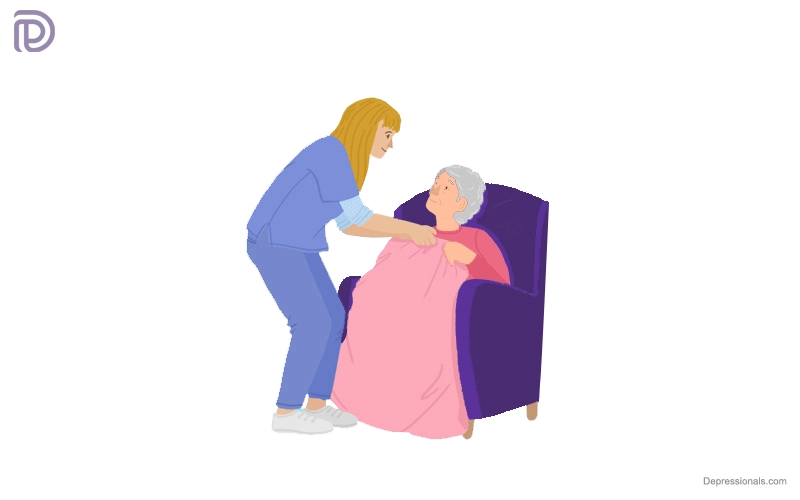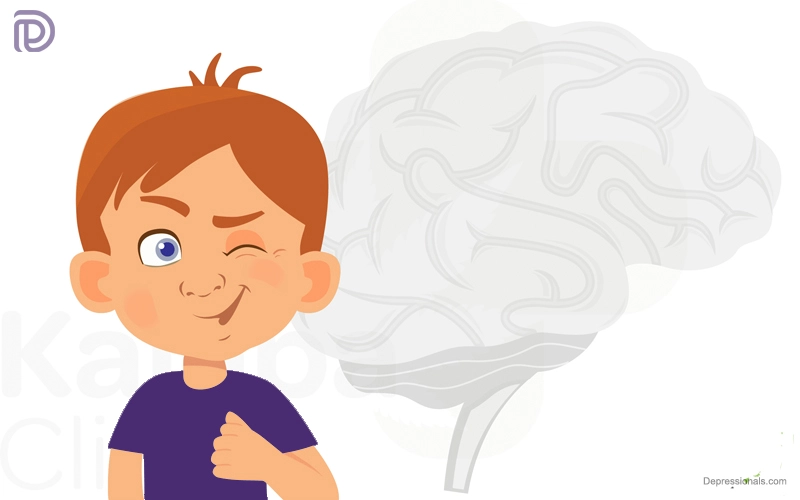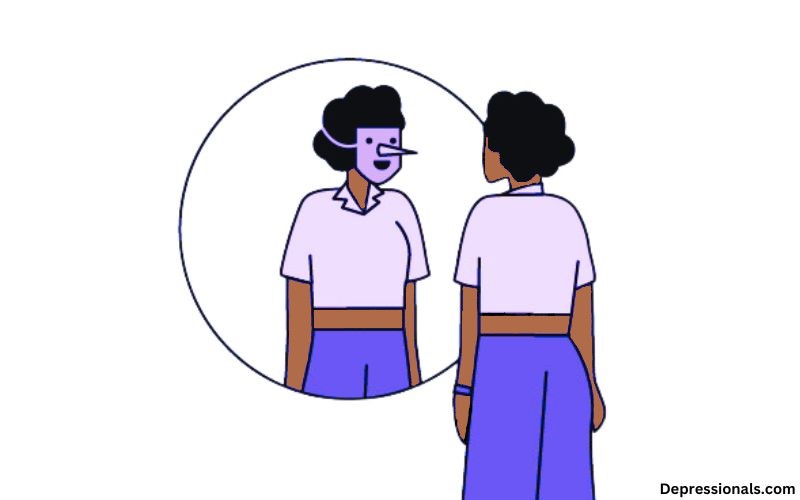Lewy body dementia (LBD) develops when abnormal amounts of alpha-synuclein are deposited in the brain. Lewy bodies affect brain chemicals that, in turn, can affect mood, movement and behavior. Lewy body dementia has been linked with a number of diseases, including Parkinson’s disease and Alzheimer’s.
There are more than 1 million people in the U.S. who suffer from LBD. The symptoms of LBD typically appear as people approach 50 years of age, although younger people may also have the disease. Males appear to be more likely to have the disease than females.
LBD can be difficult to diagnose. There is a tendency to confuse early symptoms of LBD with those of other disorders. Alzheimer’s disease is a form of Lewy body dementia that occurs alone or along with other types of dementia.
There is no cure for this disease, it is a progressive disease that progressively worsens. Between the time of diagnosis and death, the disease typically lasts between five and eight years but can last anywhere from two to twenty years for some people. It depends on overall health, age, and how severe the symptoms are that determines how fast symptoms develop and change.
People with LBD tend to function fairly normally during the early stages. A person with LBD requires more assistance as they become more disabled due to a loss of mobility and thinking ability. They often require assistance and care from others during the later stages of the disease.
It is possible for LBD symptoms to improve over time with treatment for a short period of time. Unfortunately, the condition does not have a cure. We are learning more about this challenging condition through research, and scientific advancements could lead to better diagnosis, improved treatment, and new therapies one day.
Read: Frontotemporal Dementia
What are the causes of Lewy body dementia?
Researchers are still learning about the biology and genetics behind LBD, but their understanding is growing. The accumulation of Lewy bodies, for instance, is associated with a loss of certain brain neurons that are responsible for producing two important chemicals responsible for acting as chemical messengers between brain cells (called neurotransmitters). It is believed that acetylcholine is one of these messengers. It regulates sleep, mood and motivation. Dopamine regulates behavior, cognition, movement and sleep.
Researchers are also discovering risk factors for LBD. Risk factors are things that increase the possibility of developing a disease. It is possible to control some risk factors but not others. Growing older is one of the main risk factors. The risk of LBD has not been associated with any specific lifestyle factor.
Some diseases and health conditions can contribute to LBD, like Parkinson’s disease and REM sleep behavior disorder.
It is also possible to increase a person’s risk if a family member has LBD, though this is not considered a genetic condition.
Three gene variants – APOE, SNCA, and GBA It is unknown what causes some of these factors; however, in most cases, they are associated with an increased risk.
What are the signs and symptoms of Lewy body dementia?
There is no guarantee that individuals with LBD will suffer from every symptom. It is important to seek medical attention whenever functional ability or behavior changes suddenly or significantly.
Cognitive, movement, sleep and behavior changes are usually the most prominent symptoms.
Read: Dystonia Disorder
Cognitive symptoms of Lewy body dementia
People with LBD experience changes in their thinking abilities. These changes may include:
- Visual hallucinations occur when you see things that are not there. LBD patients often experience visual hallucinations, often in the early stages. Visual hallucinations are more common, but nonvisual ones, such as smelling or hearing things that are not present, are also possible.
- During the day and even throughout the day, concentration, attention, alertness, and wakefulness may change unexpectedly. Thoughts may become unclear, disorganized or illogical. There are many similarities between LBD and Alzheimer’s disease and these differences may help distinguish them.
- Severe memory loss that interferes with everyday tasks. LBD is different from Alzheimer’s disease because memory problems may not appear immediately, but often emerge once the disease progresses. There are also changes in the way you think, like poor judgment, trouble with language, and confusion about time and place.
Movement problems and Lewy body dementia
LBD patients sometimes do not experience any noticeable movement problems until several years after diagnosis. However, they may develop them sooner or later. It is common for the first symptoms of movement to be quite mild, such as differences in handwriting. Some common symptoms of movement are:
- Stiffness or rigidity of the muscle
- Shuffled walk, slow movements or stuck stances
- Shaking or tremors, often at rest
- Falls and balance issues
- Stooped posture
- Loss of coordination
- Handwriting smaller than usual
- Reduced facial expression
- Difficulty swallowing
- Low voice
Read: Vascular Dementia
Lewy body dementia and sleep
Many people with LBD experience sleep disorders but remain undiagnosed. The services of a sleep health professional may be able to help. Some sleep disorders commonly associated with LBD include:
- REM sleep behavior disorder
- An excessive amount of sleep during the day (more than two hours)
- Insomnia
- Restless leg syndrome
Behavioral and mood symptoms
There may be changes in behavior and mood in someone with LBD, and these changes may worsen as their cognitive abilities decline. Such changes might include:
- Depression
- Apathy is usually interpreted as a lack of interest in the normal activities of daily life and a lessening of social interaction
- Anxiety and related behaviors, such as repeating the same question over and over again or being frightened or angry when loved ones are not present
- Agitation, or restlessness, as manifested in pacing, hand-wringing, difficulty settling, constant repetitions of words, or an inability to calm down
- A misguided belief or an opinion that is not supported by evidence. Someone may believe that they have an affair with their spouse or that their long dead relatives are still alive
- Paranoia, the suspicion that someone is taking or hiding something, maybe related to an extreme, irrational distrust of others
Read: Mixed Dementia
Other symptoms of Lewy body dementia
A person with LBD may also experience significant changes in the area of the nervous system that is responsible for automatic muscles, glands and heart functions. These changes may include:
- Body temperature changes
- Blood pressure problems
- Dizziness
- Fainting
- Frequent falls
- Cold and heat sensitivity
- Sexual dysfunction
- Urinary incontinence
- Constipation
- Poor sense of smell
Types of Lewy body dementia and diagnosis
Alzheimer’s disease is often confused with dementia associated with Lewy bodies (DLB), which is caused by Parkinson’s disease. The brains of people with both diagnoses are affected by the same changes over time, and, as a result, they exhibit similar symptoms over time. Different symptoms occur at different times in terms of cognitive (thinking) and movement.
The symptoms of DLB begin to appear within a year of the onset of movement problems. People with DLB may exhibit symptoms similar to those of Alzheimer’s disease in terms of their declining thinking abilities. With time, they develop movements and other characteristics that may indicate LBD.
The onset of cognitive symptoms follows at least a year after the onset of Parkinson’s disease-related movement symptoms (such as tremor or muscle stiffness). Dementia in Parkinson’s disease typically begins as a movement disorder, affecting the muscles and causing them to stiffen, tremor, and shift their walking patterns. Dementia associated with Parkinson’s disease typically begins as a movement disorder. The second stage of dementia may produce cognitive symptoms and changes in mood and behavior.
It is difficult to predict who will develop dementia in people with Parkinson’s disease. People with Parkinson’s disease commonly develop dementia in later life.
It is helpful for doctors to speak with both patients and caregivers when making a diagnosis. Any symptoms that involve your thinking, movement, sleep, or mood should be discussed with your doctor. Please discuss other health problems and provide a complete list of all the medications you are currently taking, including prescriptions, over-the-counter medicines, vitamins, and supplements. Medicines can exacerbate symptoms of LBD.
Patients may be reluctant to discuss their symptoms with their caregivers when they are present. If necessary, ask for a private consultation. It is important to have as much information as possible when a doctor is diagnosing a patient.
Read: Chronic Fatigue Syndrome
Treatment for Lewy body dementia
The symptoms of LBD can not be prevented or cured at this time, but some symptoms might be treated for a short time. It may be necessary to include medication, physical therapy, and counseling in a treatment plan for LBD. You can simplify everyday tasks by making a safety plan and identifying any equipment.
Many times people with LBD and their caregivers benefit from expert advice from a skilled care team.
Creating a Lewy body dementia care team
Once a person is diagnosed with LBD, a neurologist who is experienced in dementia and/or movement disorders can be useful. You can work with a primary care provider to develop your treatment plan. Individuals with different symptoms may benefit from physical, speech, occupational, and mental health therapists, as well as palliative care specialists.
People with LBD and their caregivers can also benefit from support groups. When people share experiences and tips in the same position, they can get emotional and social support, as well as practical solutions to daily challenges.
Medications for Lewy body dementia
Treatment for LBD symptoms is available in the form of drugs and other treatments. Certain medications can cause some symptoms to be worse, so it is necessary to consult a knowledgeable health professional.
How to cope with cognitive changes
LBD may be treated with some of the same medications used to treat Alzheimer’s disease. Cholinesterase inhibitors make the brain produce a chemical critical to memory and thinking. Also, they may reduce delusions, hallucinations, and apathy. An Alzheimer’s drug, rivastigmine, has been approved for treating cognitive symptoms associated with Parkinson’s disease dementia by the U.S. Food and Drug Administration. There are a few other drugs that could treat or disrupt LBD symptoms.
Read: Short-Term Memory Loss
How to treat Lewy body dementia movement symptoms
There are medications called carbidopa-levodopa that can treat LBD-related movement problems. You can use these drugs to make getting up, walking, and moving around easier. But they can’t reverse or stop the disease. There’s a chance this may cause hallucinations or other psychiatric issues. Some doctors might not recommend treating mild movement symptoms with medication because of this risk. LBD people are less likely to use other Parkinson’s medications because they have more side effects.
Exercise and physical therapy can help people with LBD. Consult your doctor about the best exercises.
Managing sleep disorders in Lewy body dementia
Individuals with LBD may experience confusion and behavioral problems due to sleep problems and caregivers have an increased burden to bear. If you suffer from sleep disorders like sleep apnea, restless leg syndrome, REM sleep behavior disorder, or sleep apnea, your doctor can order a sleep study.
The most common symptom of LBD is REM sleep behavior disorder, which involves acting out dreams, causing individuals and their sleeping partners to lose sleep and even suffer injuries. The medication clonazepam, which is used to treat seizures and stop panic attacks, is highly effective at treating the disorder at low doses. However, it can also cause dizziness, unsteadiness and thinking difficulties. If taken alone or with clonazepam, melatonin may also provide some benefits for treating insomnia.
LBD patients are also prone to excessive daytime sleepiness. The person may need a stimulant if they have severe symptoms.
LBD can make it difficult for some people to fall asleep. Doctors may prescribe a sleep medication if difficulty sleeping persists. People with LBD often have insomnia and other sleeping problems, and it is important to note that treatments will worsen daytime sleepiness and should not be taken lightly. Another way to overcome sleep problems is to avoid lengthy naps, increase exercise during the day, and avoid caffeine, alcohol, and chocolate late in the day.
Read: How to Deal with Frustration
Treatment of behavior and mood problems
People with LBD may experience behavioral and mood problems due to hallucinations, delusions, pain, illness, and stress. These problems may also result from frustration, fear, or overwhelming feelings. Individuals may resist care or become physically or verbally aggressive in response.
It is appropriate to give medication if the behavior affects someone’s ability to care for themselves or others. Medication should only be used for the shortest time possible if it is used.
A visit to the doctor is the first step to determine if an underlying medical issue is responsible for the problem. Confusion and behavioral problems can be worsened when there are injuries, fever, infections, bedsores and pressure ulcers.
A number of medications have been associated with behavioral problems, including anticholinergics and antihistamines. You can get confusion, agitation, hallucinations, and delusions from some sleep aids, painkillers and bladder control drugs. Likewise, some anti-anxiety medications may actually exacerbate anxiety symptoms in individuals with LBD. It is recommended to discuss any changes in medication with your doctor.
Some people with LBD may experience hallucinations and other psychiatric symptoms reduced by calcium-channel blockers, but they may experience side effects, such as nausea, and this type of treatment is not always effective. The good news is that they are an excellent first choice in the treatment of behavioral symptoms. It is important to consider cholesterol esterase inhibitors as part of a long-term treatment plan since their effects do not occur immediately.
LBD is commonly characterized by depression and anxiety, which can be treated with antidepressants. Many of them are often well tolerated by people with LBD.
A person with LBD and their caregivers may need antipsychotic medications at times to treat the behavioral symptoms associated with LBD. It is very important to use caution if you are currently taking these types of medications as they can worsen movement symptoms and cause severe side effects, such as fainting, confusion, and extreme sleepiness. Neuroleptic malignant syndrome is a potentially deadly condition that can occur in rare instances. High fever and rigidity of the muscles along with muscle tissue breakdown are symptoms of this condition. Tell your doctor immediately if you are experiencing any of these symptoms.
People with LBD are particularly at risk of death from antipsychotic medications as they have a higher risk of death than those with other forms of dementia. Antipsychotic use must be balanced with the risks posed by untreated behavioral symptoms and physical harm.
Read: Cognitive Disorder
Other treatment considerations
Blood pressure, digestion, and other automatic functions of the nervous system are affected by LBD. When you stand up, the blood pressure drops, causing dizziness and fainting as a result. If your doctor recommends it, you can increase salt and fluid intake as well as elevate your legs. Medication may also be prescribed if these measures do not work.
Patients with LBD can have reactions to medications for other medical conditions, such as prescriptions and over-the-counter. It is very important that those with LBD tell their doctors about any medications, including over-the-counter and prescription medicines, vitamins and supplements. Ask the doctor to consult the person’s neurologist if the patient is told to stop all medications before surgery and to develop a plan for precautionary withdrawal. Additionally, you should discuss with your anesthesiologist medications and risks that are unique to LBD in advance. Some anesthetics may make people with LBD dizzy or confused, and they may lose significant functional ability due to a sudden, permanent decline.
Depending on the procedure, spinal blocks or regional blocks may be alternatives to general anesthesia. This method is less likely to leave the patients confused following surgery. Additionally, caregivers should explain how people with LBD can become delirious if they take too many strong pain relievers after surgery.






I will right away grab your rss as I can’t find your e-mail subscription link or newsletter service. Do you’ve any? Kindly let me know in order that I could subscribe. Thanks.
It will hard to search out knowledgeable people on this topic, but you sound like you know what you抮e talking about! Thanks
Hi! Someone in my Facebook group shared this site with us so I came to look it over. I’m definitely loving the information. I’m book-marking and will be tweeting this to my followers! Excellent blog and brilliant design.
Thank you for delivering these necessary, safe, revealing and in addition unique tips about your topic to Lizeth.
I absolutely love your blog and find a lot of your post’s to be just what I’m looking for. can you offer guest writers to write content for yourself? I wouldn’t mind writing a post or elaborating on a number of the subjects you write about here. Again, awesome web log!
great issues altogether, you just received a new reader. What could you suggest in regards to your put up that you made some days in the past? Any sure?
Have you ever thought about including a little bit more than just your articles? I mean, what you say is fundamental and all. Nevertheless imagine if you added some great pictures or videos to give your posts more, “pop”! Your content is excellent but with pics and videos, this website could certainly be one of the greatest in its field. Great blog!
I know this if off topic but I’m looking into starting my own weblog and was wondering what all is needed to get setup? I’m assuming having a blog like yours would cost a pretty penny? I’m not very web savvy so I’m not 100 sure. Any suggestions or advice would be greatly appreciated. Kudos
Very great post. I just stumbled upon your weblog and wanted to say that I have truly loved browsing your weblog posts. In any case I will be subscribing in your feed and I am hoping you write once more soon!
Needed to write you that very small note to finally say thanks a lot over again with your precious principles you’ve contributed on this page. I think there are millions of more fun moments up front for individuals who scan your site.
Thanks for all the tips I have learned from your web-site.
Many thanks sharing your thinking on this weblog.
hello there and thank you for your information. Ensure that you update this again soon..
Heya! I just wanted to ask if you ever have any problems with hackers? My last blog (wordpress) was hacked and I ended up losing several weeks of hard work due to no backup. Do you have any methods to stop hackers?
Definitely believe that which you stated. Your favorite justification seemed to be on the internet the simplest thing to be aware of. I say to you, I certainly get irked while people think about worries that they just don’t know about. You managed to hit the nail upon the top and defined out the whole thing without having side-effects , people could take a signal. Will likely be back to get more. Thanks
It’ll really a nice and helpful piece of info. I am glad that you shared this helpful information with us. Please keep us informed like this. Thanks for sharing.
Whats up are using WordPress for your site platform? I’m new to the blog world but I’m trying to get started and create my own. Do you require any coding knowledge to make your own blog? Any help would be really appreciated!
Hey there! I know this is kinda off topic but I was wondering which blog platform are you using for this site? I’m getting sick and tired of WordPress because I’ve had issues with hackers and I’m looking at alternatives for another platform. I would be awesome if you could point me in the direction of a good platform.
My brother suggested I might like this web site. He was once entirely right. This publish actually made my day. You can’t believe just how so much time I had spent for this info! Thanks!
Thanks for discussing your ideas.
Thanks for your publication.
Remarkable things here. I am very glad to see your post. Thanks a lot and i am looking forward to contact you. Will you kindly drop me a e-mail?
Well I truly enjoyed reading it. This post procured by you is very useful for correct planning.
There is visibly a bunch to know about this. I assume you made certain nice points in features also.
Great blog! Do you have any tips for aspiring writers? I’m planning to start my own website soon but I’m a little lost on everything. Would you propose starting with a free platform like WordPress or go for a paid option? There are so many choices out there that I’m totally confused .. Any ideas? Cheers!
One other issue is that if you are in a circumstance where you would not have a cosigner then you may really need to try to wear out all of your federal funding options. You can find many funds and other scholarships that will supply you with money to support with institution expenses. Thx for the post.
Thank you for the auspicious writeup. It actually was once a entertainment account it. Look advanced to more introduced agreeable from you! By the way, how can we keep up a correspondence?
Hey, you used to write excellent, but the last several posts have been kinda boring?I miss your tremendous writings. Past few posts are just a bit out of track! come on!
I have observed that car insurance businesses know the automobiles which are at risk from accidents and also other risks. Additionally, these people know what types of cars are given to higher risk as well as the higher risk they have got the higher a premium amount. Understanding the straightforward basics of car insurance just might help you choose the right type of insurance policy that will take care of the needs you have in case you get involved in an accident. Thank you for sharing the ideas on your blog.
Thanks for your tips.
Its like you read my mind! You appear to know so much about this, like you wrote the book in it or something. I think that you could do with a few pics to drive the message home a little bit, but instead of that, this is excellent blog. A great read. I will certainly be back.
Pretty nice post. I just stumbled upon your blog and wished to say that I’ve truly enjoyed browsing your blog posts. After all I will be subscribing to your rss feed and I hope you write again soon!
WONDERFUL Post.thanks for share..more wait .. ?